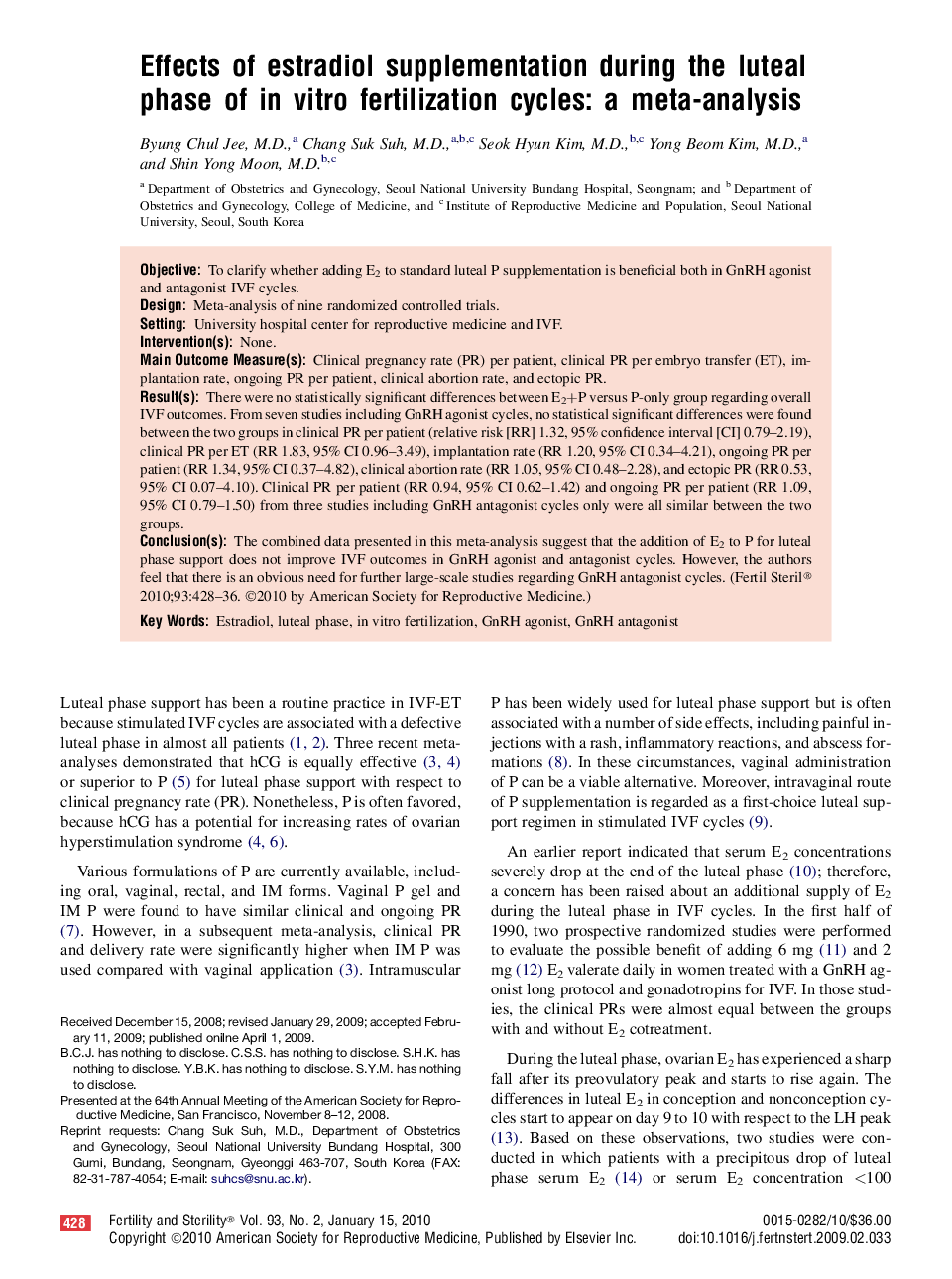| Article ID | Journal | Published Year | Pages | File Type |
|---|---|---|---|---|
| 3933655 | Fertility and Sterility | 2010 | 9 Pages |
ObjectiveTo clarify whether adding E2 to standard luteal P supplementation is beneficial both in GnRH agonist and antagonist IVF cycles.DesignMeta-analysis of nine randomized controlled trials.SettingUniversity hospital center for reproductive medicine and IVF.Intervention(s)None.Main Outcome Measure(s)Clinical pregnancy rate (PR) per patient, clinical PR per embryo transfer (ET), implantation rate, ongoing PR per patient, clinical abortion rate, and ectopic PR.Result(s)There were no statistically significant differences between E2+P versus P-only group regarding overall IVF outcomes. From seven studies including GnRH agonist cycles, no statistical significant differences were found between the two groups in clinical PR per patient (relative risk [RR] 1.32, 95% confidence interval [CI] 0.79–2.19), clinical PR per ET (RR 1.83, 95% CI 0.96–3.49), implantation rate (RR 1.20, 95% CI 0.34–4.21), ongoing PR per patient (RR 1.34, 95% CI 0.37–4.82), clinical abortion rate (RR 1.05, 95% CI 0.48–2.28), and ectopic PR (RR 0.53, 95% CI 0.07–4.10). Clinical PR per patient (RR 0.94, 95% CI 0.62–1.42) and ongoing PR per patient (RR 1.09, 95% CI 0.79–1.50) from three studies including GnRH antagonist cycles only were all similar between the two groups.Conclusion(s)The combined data presented in this meta-analysis suggest that the addition of E2 to P for luteal phase support does not improve IVF outcomes in GnRH agonist and antagonist cycles. However, the authors feel that there is an obvious need for further large-scale studies regarding GnRH antagonist cycles.
